Classic Film Noirs
The Encyclopedia Britannica defines film noir as a "film genre that offers dark or fatalistic interpretations of reality. The term is applied to U.S. films of the late 1940s and early '50s that often portrayed a seamy or criminal underworld and cynical characters. The films were noted for their use of stark, expressionistic lighting and stylized camera work, often employed in urban settings." For more information about film noir, track down the following articles:
Stankowski, R.H. (1986). Night of the Soul: American Film Noir. Studies in Popular Culture, 9(1), 61-83.
Schrader, Paul. (1972). Notes on film noir. Film Comment, 8(1), 8-13.
The following are classic noirs that are available at Mabee Library.
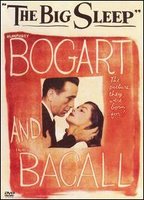 The Big Sleep
The Big Sleep
PN1997 .B544 2000
Watch the trailer:
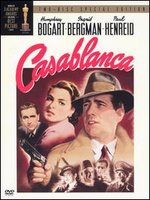
Watch the trailer:
 Chinatown
Chinatown
PN1997 .C46 1997
Watch the trailer:
You can preview the film by streaming or downloading it from the Internet Archive.
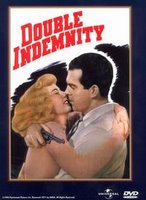 Double Indemnity
Double Indemnity
PN1997 .D68 1991
Watch an excerpt from the film:
Watch Robert DeNiro get a little gun crazy:
 The Hitch-Hiker
The Hitch-Hiker
PN1997 .H58 1997
Stankowski, R.H. (1986). Night of the Soul: American Film Noir. Studies in Popular Culture, 9(1), 61-83.
Schrader, Paul. (1972). Notes on film noir. Film Comment, 8(1), 8-13.
The following are classic noirs that are available at Mabee Library.
 The Big Sleep
The Big SleepPN1997 .B544 2000
Howard Hawks' The Big Sleep is one of the most influential detective movies ever to come out of Hollywood, ranking with John Huston's The Maltese Falcon, which also starred Humphrey Bogart. What makes the film's success astonishing is that it had a troubled post-production history, requiring extensive reshooting, and a script that, in its final version, is so filled with blind alleys and red herrings that no one was exactly sure what the movie was about. The original Raymond Chandler novel had one of that author's more impenetrable plots, with a series of murders that constitute more of a web than a chain, and included key details, involving drug use and pornography, that had to be soft-pedalled in the movie. In the final cut of the film and the final draft of the script, no one ever explains who killed chauffeur Owen Taylor, and it's almost impossible to tell why fully a third of the other killings in the movie took place. Moreover, if it is important to the viewer to know what Arthur Gwynn Geiger is selling out of his bookstore, one has to read the book to find out. Hawks breezed past all of these potential problems by letting the dialogue and the action spill out so fast that one barely had time to acknowledge, much less absorb, a new fact or plot element before the next one was upon the viewer. Where he did slow down was in the fiercely sexual repartee between Bogart's Philip Marlowe and Lauren Bacall's Mrs. Rutledge, one of the most blatant displays of pre-coital jousting in a mainstream Hollywood movie at that time. The irony, for a movie that was ahead of its time, is that it was nearly two years late getting out to the public, as it was pulled and reshot after initial screenings, increasing Bacall's role, among other changes. The result was a mystery that remained mysterious, but also a cutting-edge movie with a razor-sharp sexual edge. And it turned out that this mattered a lot more than finding out who killed Owen Taylor. ~Bruce Eder, All Movie Guide
Watch the trailer:

Casablanca
PN1997 .C352 1992
PN1997 .C352 1992
There are many people for whom Casablanca is the greatest Hollywood movie ever made, and, while that may be going a bit far, one would be hard-pressed to think of another film in which the pieces fell together with such serendipity. It's hard to imagine a movie in which the leads are better cast: Humphrey Bogart's tough, effortless cool gives Rick the ideal balance of honor and cynicism, Ingrid Bergman's luminous beauty makes it seem reasonable that men would fight for Ilsa's affections, and Paul Henreid's Victor is cold enough that you can imagine Ilsa's being tempted by her old flame. The supporting cast is superb down the line; Claude Rains, Peter Lorre, Conrad Veidt, Sydney Greenstreet, Dooley Wilson, and S.Z. Sakall are all so memorable that one tends to forget that none is onscreen for very long. The screenplay often walks the border of cliché, but the story has just enough twists, and the dialogue so much snap, that it stays compelling throughout. And Michael Curtiz knew just when to turn on the schmaltz and when to cut it off. Casablanca blends romance, suspense, humor, and patriotic drama with such skill that one imagines it must have happened by accident, and the movie looks better with each passing year. You'll laugh, you'll cry, you'll cheer, and the good guys strike a blow against Fascism -- what more could you want from a movie? ~Mark Deming, All Movie Guide
Watch the trailer:
 Chinatown
ChinatownPN1997 .C46 1997
"You may think you know what you're dealing with, but believe me, you don't," warns water baron Noah Cross (John Huston), when smooth cop-turned-private eye J.J. "Jake" Gittes (Jack Nicholson) starts nosing around Cross's water diversion scheme. That proves to be the ominous lesson of Chinatown, Roman Polanski's critically lauded 1974 revision of 1940s film noir detective movies. In 1930s Los Angeles, "matrimonial work" specialist Gittes is hired by Evelyn Mulwray (Faye Dunaway) to tail her husband, Water Department engineer Hollis Mulwray (Darrell Zwerling). Gittes photographs him in the company of a young blonde and figures the case is closed, only to discover that the real Mrs. Mulwray had nothing to do with hiring Gittes in the first place. When Hollis turns up dead, Gittes decides to investigate further, encountering a shady old-age home, corrupt bureaucrats, angry orange farmers, and a nostril-slicing thug (Polanski) along the way. By the time he confronts Cross, Evelyn's father and Mulwray's former business partner, Jake thinks he knows everything, but an even more sordid truth awaits him. When circumstances force Jake to return to his old beat in Chinatown, he realizes just how impotent he is against the wealthy, depraved Cross. "Forget it, Jake," his old partner tells him. "It's Chinatown." Reworking the somber underpinnings of detective noir along more pessimistic lines, Polanski and screenwriter Robert Towne convey a '70s-inflected critique of capitalist and bureaucratic malevolence in a carefully detailed period piece harkening back to the genre's roots in the 1930s and '40s. Gittes always has a smart comeback like Humphrey Bogart's Sam Spade and Philip Marlowe, but the corruption Gittes finds is too deep for one man to stop. Other noir revisions, such as Robert Altman's The Long Goodbye (1973) and Arthur Penn's Night Moves (1975), also centered on the detective's inefficacy in an uncertain '70s world, but Chinatown's period sheen renders this dilemma at once contemporary and timeless, pointing to larger implications about the effects of corporate rapaciousness on individuals. Polanski and Towne clashed over Chinatown's ending; Polanski won the fight, but Towne won the Oscar for Best Screenplay. Chinatown was nominated for ten other Oscars, including Picture, Director, Actor, Actress, Cinematography, Art Direction, Costumes, and Score. ~Lucia Bozzola, All Movie Guide
Watch the trailer:
PN1997 .D16 2004
One of the most definitive films noirs, the suspenseful D.O.A. also features one of the greatest conceits in film history: a man trying to solve his own murder. Not many movies can boast the line, "You've been murdered." The existential anxieties lurking in other film noirs are at the forefront of D.O.A.: the "walking dead man" metaphor is no longer merely a metaphor. The underrated Edmond O'Brien was at his finest as the accountant fighting a fatal, slow-acting poison. The film was the first directorial effort from famed cinematographer Rudolph Maté (The Passion of Joan of Arc, Vampyr), and would be his most enduring film. Though the production values were in keeping with B-movies of the time, the stylish black-and-white cinematography of Ernest Laszlo was creative even by expressionistic standards. D.O.A. has been remade twice, first as the average Color Me Dead and then as 1988's vapid D.O.A. (1988). ~Brendon Hanley, All Movie Guide
You can preview the film by streaming or downloading it from the Internet Archive.
 Double Indemnity
Double IndemnityPN1997 .D68 1991
Billy Wilder only made one proper film noir, but it was a doozy: Double Indemnity is one of the most unrelentingly cynical films the genre produced, with a pair of career-changing performances from Barbara Stanwyck and Fred MacMurray and a script by Wilder and Raymond Chandler every bit as black-hearted as James M. Cain's novel Three of a Kind, on which the film was based. The idiosyncratically attractive Stanwyck, generally thought of as pretty but hardly a bombshell, was rarely as sexy as she was as Phyllis Dietrichson, and never as sleazy; Phyllis knows how to use her allure to twist men around her little finger, and from the moment Walter Neff lays eyes on her, he's taken a sharp turn down the Wrong Path, as Phyllis oozes erotic attraction at its least wholesome. While MacMurray was best known as a "nice guy" leading man (an image that stuck with him to the end of his career), he was capable of much more, and he gave perhaps the finest performance of his life as Walter Neff, a sharp-talking wise guy who loses himself to weak, murderous corruption when he finds his Achilles Heel in the brassy blonde Phyllis. (MacMurray's only role that rivalled it was as the heartless Mr. Sheldrake in The Apartment, also directed by Wilder.) And, while they followed the Hays Code to the letter, Wilder and Chandler packed this story with seething sexual tension; Neff's morbid fascination with Phyllis's ankle bracelet is as brazenly fetishistic as 1940s filmmaking got. Double Indemnity was not a film designed to make evil seem attractive -- but it's sure a lot of fun to watch. ~Mark Deming, All Movie Guide
Watch an excerpt from the film:
While often compared to Bonnie and Clyde, which it preceded by nearly 20 years, Gun Crazy is in many ways a more daring and disturbing film; while the leads lack the skill and charisma of Warren Beatty and Faye Dunaway, and the picture is sometimes betrayed by its obvious low budget, director Joseph H. Lewis gives his story a subversive sexual economy that's more provocative than that of Arthur Penn's later (and bolder) variation, and his bluntly energetic and inventive visual storytelling helped make Gun Crazy one of the most fabled low-budget crime pictures of the 1940s. The doomed romance between weak-willed sharpshooter Bart Tare (John Dall), who loves guns but lacks the courage to kill, and Annie Laurie Starr (Peggy Cummins), who is the aggressor in the relationship but can't shoot with the same grace and elan as Bart, can be read on several different levels, none of them especially healthy. While the film satisfied the edicts of 1940s film censorship, lust has rarely seemed more vivid than between Bart and Annie; their relationship is based less on love than on pure animal instinct, and Lewis makes it seem both compelling and unwholesome. Within moments of meeting each other, Bart and Annie seem bound for life and on the fast track to damnation, with no repentance possible or requested; Jim Thompson never imagined a couple as doomed and damaged as these two. And Lewis takes visual chances that one would hardly expect from a 1940s B-movie -- especially the justifiably famous robbery sequence, shot in one take from the back seat of a car -- giving the picture an inventive style that makes the material all the more effective. If Gun Crazy's ambitions sometimes outstrip its means, Lewis got enough of his ideas on the screen to make this one of the most fascinating and thought-provoking crime films of its era. ~Mark Deming, All Movie Guide
Watch Robert DeNiro get a little gun crazy:
 The Hitch-Hiker
The Hitch-HikerPN1997 .H58 1997
A taut, thrilling B-movie, The Hitch-Hiker features fasten-your-seatbelts, edge-of-your-seat tension from start to finish. Ida Lupino really makes her mark here as a director with a film that is as tough and merciless as anything any of her male counterparts were creating at the time. Edmund O'Brien and Frank Lovejoy are good as regular joes who are on the longest and worst fishing trip of their lives. But it's William Talman as their sadistic kidnapper who is brilliant. This is one of those performances that all future criminal scumball characters can be measured by. Talman's cold-blooded killer personifies America's deepest fears about random crime that can strike anyone anywhere. ~Adam Bregman, All Movie Guide
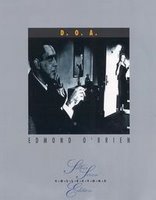
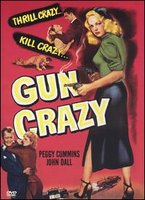
0 Comments:
Post a Comment
<< Home